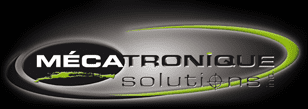Discover advanced machine vision cameras tailored for medical applications, which are considered effective vision solutions .
These innovative machine vision solutions aim to elevate product quality, enhance inspection processes, and support various applications across various industries .
With real-time analysis, they strive to guarantee precision and efficiency throughout each operation.
Investing in these technologies can help minimize errors and optimize productivity by utilizing advanced sensors .
In today's manufacturing environment, maintaining high product quality while managing complex inspections can be challenging, especially without factory automation . Without the right tools, errors can lead to costly delays and dissatisfied customers. Machine vision systems offer a transformative solution, enhancing production efficiency by automating inspections and ensuring precision at every stage. By employing advanced algorithms for real-time analysis, these systems enhance operational efficiency and significantly reduce manual errors.
Imagine a streamlined workflow where quality control is automated, allowing your team to focus on innovation rather than repetitive tasks. With machine vision systems, you can improve team collaboration and foster a culture of excellence through the application of computer vision technologies.










